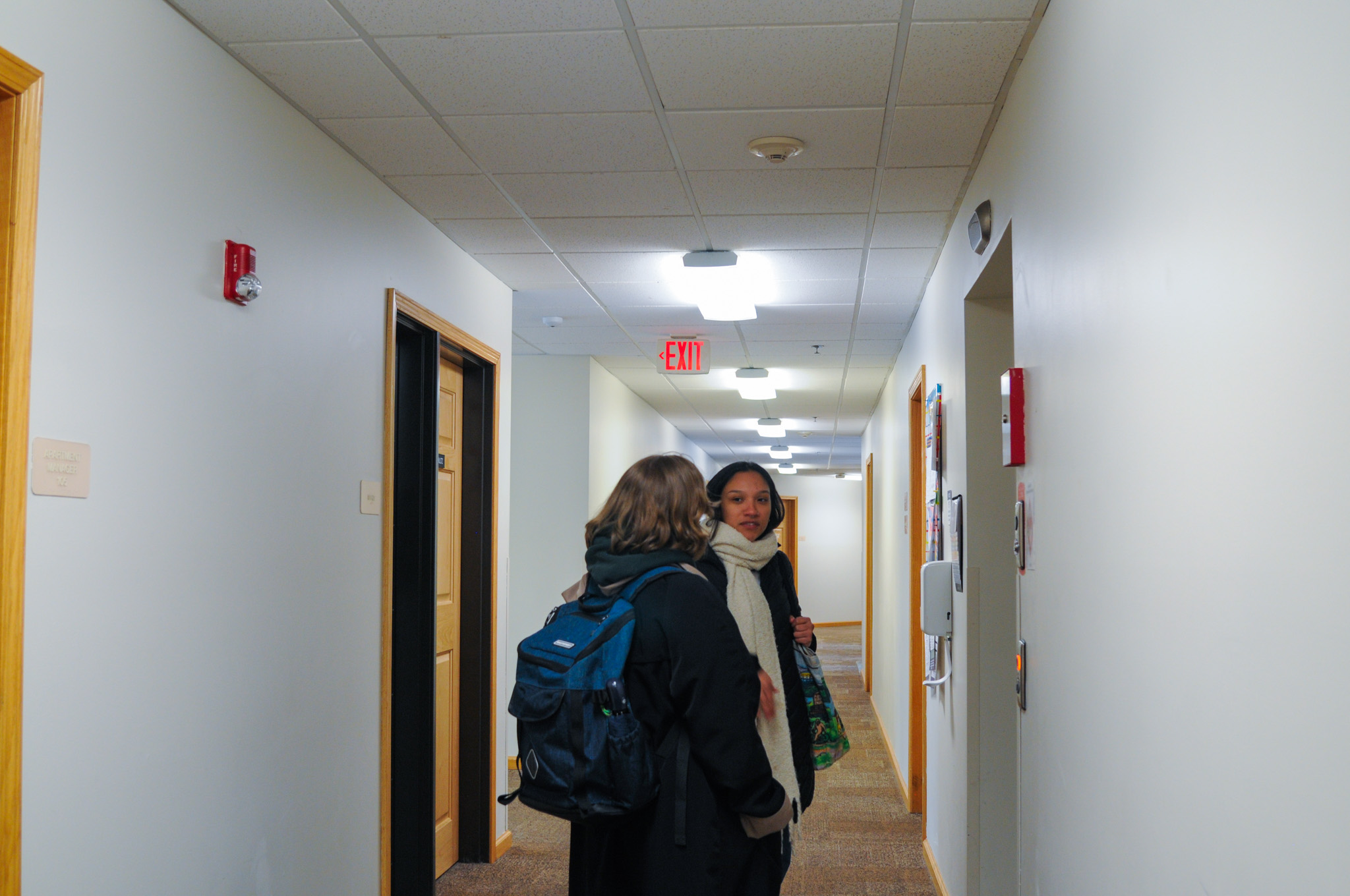The elevator in the Octavio Romero Apartments, the primary residential building for upperclassmen on campus, has seen an increase of issues in the last few months. In addition, Romero has seen an increase of fire alarms recently, leading to questions about the alarm system, and making students reluctant to leave the building when the alarm goes off.
Brian Mast, director of facilities, said that troubles with the Romero elevator began right before winter break. Mast said that within the past few months, there have been seven or eight reports of the elevator breaking down, with half of the outages being attributed to vandalism.Mast said, “We found trash stuff where it’s not supposed to go and that knocks the elevator out of use, and that’s so frustrating from a facility standpoint … and from a student use standpoint. It’s 100% avoidable and we can’t catch who’s doing it.”
Kevin Schultz, assistant director of residence life and the resident director for Romero and the Intentional Living Communities, said that to deter future vandalism of the elevators, they will enforce community billing if they find that trash caused the elevator to break down again.
“I feel like the effort to have community/mutual accountability amongst the community of people in the building is working thus far — but it’s been, you know, [only] a couple weeks,” Schultz said.
Maddie Bollinger, senior elementary education major and Romero resident, said, “I understand why they’re doing community billing, but I’m kind of like, confused as to ‘When did it start?,’ ‘How is it possible [that trash got in the elevator]?’”
While the elevator has seen outages in previous years, Schultz said that this is the first time students have gotten stuck and needed to be freed by the fire department.
There were three different instances where students got stuck in the elevator. One instance happened Jan. 14, with Alyssa McDonald, Collin Echols and Cormac Koop Liechty — all senior broadcasting majors.
“I had to go to the bathroom so bad before we got in that elevator. I was like ‘Oh, it’ll be fine … I’ll just go in my room,’” McDonald said. “Lo and behold, we were in there for like 30 minutes and just had to suffer — But no, I was honestly fine, and it was better that I was in there with people I knew.”
Both McDonald and Echols said that they have avoided using the elevator since then, with McDonald clarifying that she has since only used the elevators to do her laundry, as it is in the basement and her apartment is on the third floor.
Kamille Badibanga, a senior public health major and Romero four resident assistant, was one of the people who also highlighted the accessibility issue the dysfunctional elevator poses. She said, “I’ve heard from a couple of students where it’s an accessibility issue and then others, it’s just an inconvenience — especially living on the fourth or like third floors.”
There has also been confusion around the fire alarms in the apartments. Mast said, “We’ve spent a lot of money on false fire alarms, but we also had an actual fire alarm … [and] all our fire life safety systems functioned like they should have, which was nice to see.”
Schultz said that while people sometimes ignore fire alarms — assuming they are not actually in danger — they do not play with people’s safety. “I don’t always want to [evacuate] because I know what’s going on in some cases, but I’m not here to play a game of, like, ‘Is it, or is it not?’ I’d rather be cold for five minutes than have much, much worse happen,” Schultz said.
“Anytime there’s issues with any elevator — if it’s just not calling or whatever … people should be texting their RA immediately,” Schultz said. “[Then] they can put a work order in … and get it fixed as fast as we can.”



